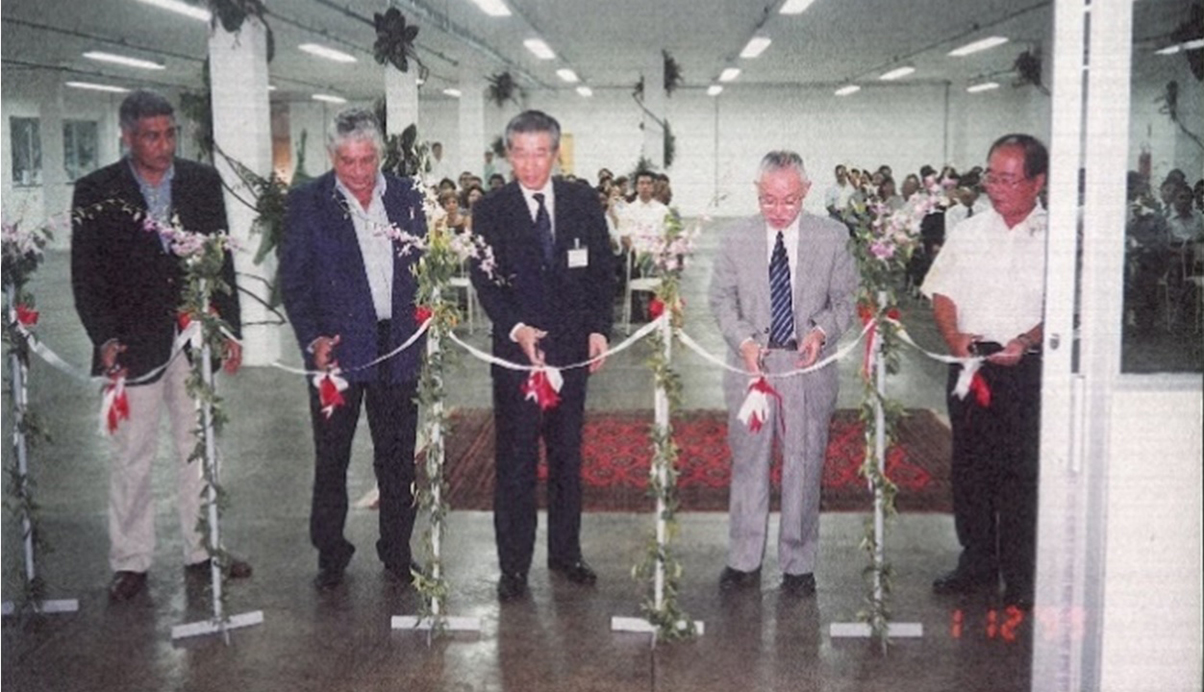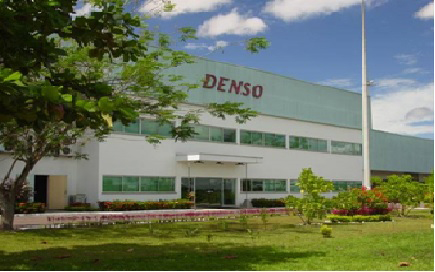2. Business diversification (1) Motorcycles and electronics products
[3] Relocating from a rental plant to a company-owned plant
DNAZ experienced various problems at the rental plant, however.
During the rainy season, for example, meetings had to be paused because of the sound of rain hitting the tin roof. In addition, the plant became inundated with water at times due to rain leaks and overflow from water pipes, and every associate had to mop up water to prevent the production lines from becoming flooded.
Meanwhile, the water supply was often interrupted during the dry season, resulting in water stoppages inside the plant as well. DNAZ was sometimes unable to locate the bus A/C case and finished product stock area inside the plant, so ended up storing these products outside and covering them with tarps. This solution led many associates to become infected with dengue fever when mosquitoes bred in the rainwater that pooled on the tarps.
Consequently, DNAZ rented a new plant on a neighboring site where it secured storage areas for cases and finished products. As a result, the site area and building area grew to 6,750 m2 and 4,000 m2, respectively. Since a 17% ICMS (tax on the movement of goods and services) would be incurred if the manufactured parts were transported using public roads, however, DNAZ knocked down the walls between the new and old plants, and created a passage to avoid taxation.
This environment made it impossible for DNAZ to engage in manufacturing with DENSO quality, however. Having made this judgment, DNAZ acquired an existing plant along with its site as it made its full-scale transition to magneto part localization. DNAZ converted this facility into a company-owned plant that enabled safe, high-quality manufacturing. The new plant had a site area of 30,000 m2 and a building area of 8,200 m2. Located in an industrial park in Manaus, the new plant was also only about three kilometers away from Moto Honda, DNAZ’s main customer.


DNAZ commenced production at the new plant in September 1999. The opening ceremony was attended by guests from the state government of Amazonas, the Superintendency for the Development of Amazonia, the Consulate-General of Japan, and Moto Honda’s top management, as well as Oyuki Ogawa, Head of the Engine Control Components Product Division and Executive Director at DENSO Headquarters, and Michio Amano, President & CEO of DNBR.